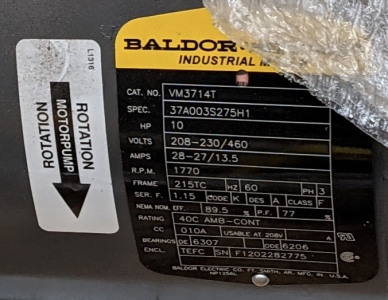- Joined
- Oct 30, 2019
- Messages
- 201
Hello,
I have a 3 ton chain hoist I have finished repairing and am looking to make a local friend with 3ph power that I can test it on. Due to the controls layout, a VFD is not sufficient to test this otherwise I would do it myself.
Anyone have a commercial or other space where I could borrow a 3-pole 15-20 amp breaker in your panel for 30 minutes? Would be happy to figure out what favors I might be able to offer in exchange at some point.
I have a local contact with a rotary phase converter but it is not quite healthy at the moment - it would be nice to test this on native 3ph to avoid chasing ghosts.
I have a 3 ton chain hoist I have finished repairing and am looking to make a local friend with 3ph power that I can test it on. Due to the controls layout, a VFD is not sufficient to test this otherwise I would do it myself.
Anyone have a commercial or other space where I could borrow a 3-pole 15-20 amp breaker in your panel for 30 minutes? Would be happy to figure out what favors I might be able to offer in exchange at some point.
I have a local contact with a rotary phase converter but it is not quite healthy at the moment - it would be nice to test this on native 3ph to avoid chasing ghosts.


